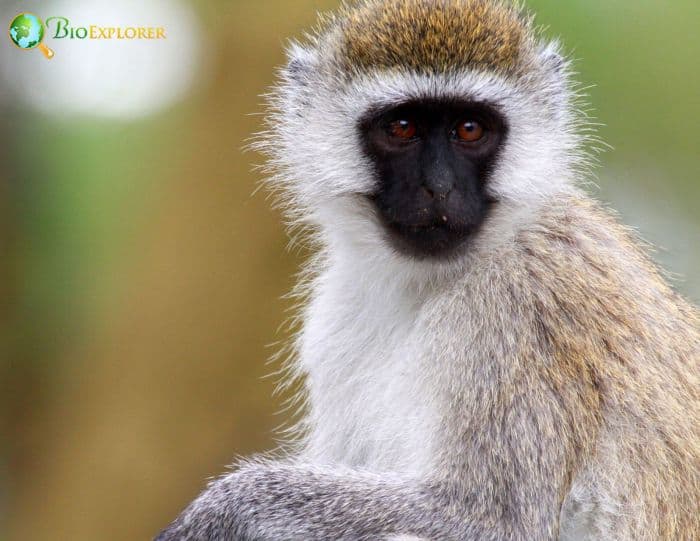
| Animalia | Primates | Cercopithecidae | Chlorocebus | Chlorocebus aethiops |


- Common Name: Grivet
- Taxonomy Classification Year: 1758
- Monkey Size: 40 to 60 cm (15.75 to 23.62 in)
- Skin Color(s): Olive
- Habitat: Scrub forest, savanna or grassland
- Diet: Omnivorous
- Native Countries: Ethiopia, Sudan, Djibouti, Eritrea
Grivet Distribution
Grivet Monkey Characteristics

The Grivet monkey[1] (Chlorocebus aethiops) is an Old World monkey with long tufts of white fur on the sides of its face.

- Some authorities consider this and all members of the Chlorocebus genus to be a single species – Cercopithecus aethiops.
- All individuals have shoulder-length hair on most of the body and elongated side whiskers.
- Whiskers are generally lighter in color (white or pale yellow) and vary in length from individual to individual.
- Grivet monkeys’ faces are typically sooty black. However, a characteristic feature of this species is the greenish tint of the upper part of the face, which is formed due to the merging of individual hairs with yellow and black strands.
- In males, the scrotum and surrounding areas are light blue or greenish in color.
What Eats green monkeys?

According to the African Journal of ecology research notes, Leopards (Panthera pardus) also feed on green monkeys[§].
Grivet Monkey Facts

- Grivet monkeys are very social animals. They travel in small groups and are among the few species to have groups with multiple males.
- High-ranking male species demonstrate their place in the hierarchy by stiffly cocking their tails and walking in front of lower-ranking males.
- Grivet monkeys differ from other species because they prefer open areas to forests and are highly adept at locomotion on land.
- Grooming is common among most primates, and Chlorocebus aethiops is no exception. In addition, grooming is often used as a courtship strategy.
- The swelling of the female’s vulva alerts the male when they are in estrus.

Suggested Reading: Various Species of Monkeys
Cite This Page
APA7MLA8Chicago
BioExplorer.net. (2025, April 14). Grivet Monkey. Bio Explorer. https://www.bioexplorer.net/animals/mammals/monkeys/grivet-monkey/.
BioExplorer.net. "Grivet Monkey" Bio Explorer, 14 April 2025, https://www.bioexplorer.net/animals/mammals/monkeys/grivet-monkey/.
BioExplorer.net. "Grivet Monkey" Bio Explorer, April 14 2025. https://www.bioexplorer.net/animals/mammals/monkeys/grivet-monkey/.










